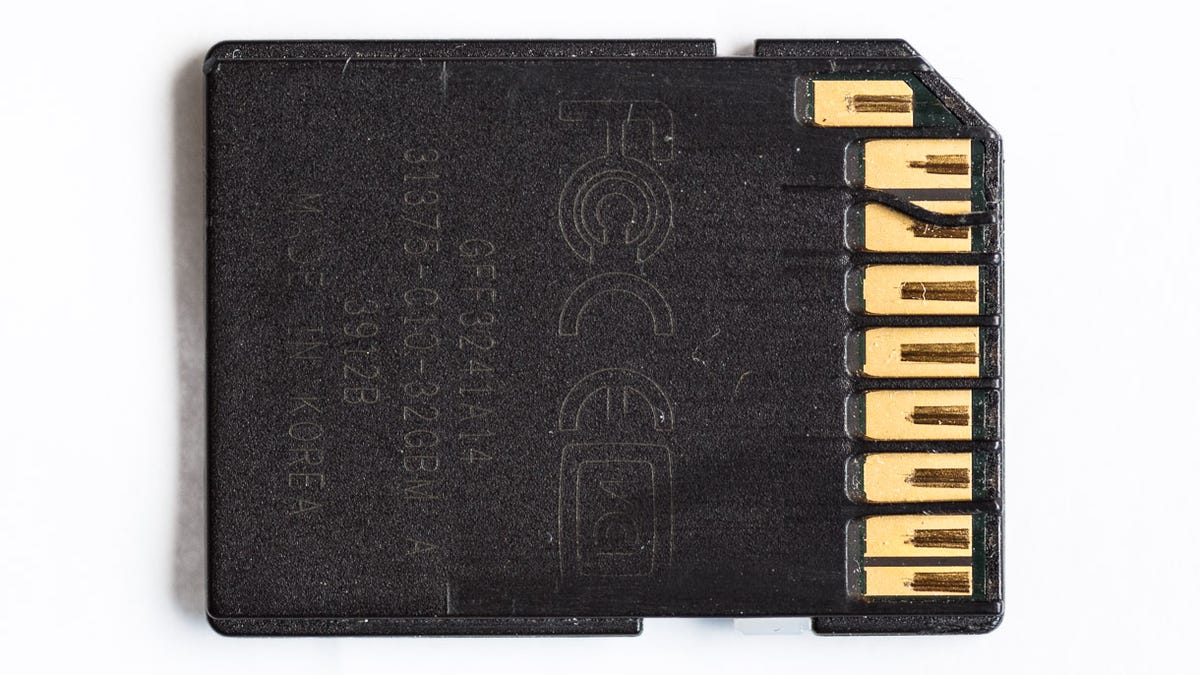SD Card: Too bad this format won the flash-card wars
<b>commentary</b> The flash memory technology is inexpensive and ubiquitous, but it's also physically feeble. As it spreads up-market, pros and enthusiasts are stuck with its shortcomings.

I like the low cost of SD Cards. I like the fact that slots for the memory card format are built into many computers nowadays. I like that the digital camera industry has mostly settled on a single format instead of the gaggle of incompatible options from years past. I like that you can buy an SD Card all over the world if you're on vacation and you want to take more photos.
It's too bad I don't like the SD Card format itself.
My beef comes down to one primary problem: I don't think the design is durable enough. For the second time in a year, the narrow plastic dividers between the electrical contacts on the back of the card snapped partly loose. The misaligned prong prevented me from retrieving my photos until I carefully chopped it off with a pocketknife.
I have other gripes, too -- the baffling speed ratings (What's better, Class 10 or UHS-1?) and the slider that slips too easily into write-protect mode. Those I can live with, but overall, I can't help but feel that SD Cards are designed to be slotted into a camera and never touched again.
That's fine for a lot of people, but it's a drag for those of us who take a lot of pictures and are constantly popping cards in and out of cameras and card readers. And because of SD Card's popularity -- it shows up on high-end cameras like the
I thought maybe the problem was just me, but when I asked colleague and camera reviewer Lori Grunin if she had any questions about SD Card durability, she said, "My biggest issue with them is that the tiny plastic dividers that define the contact areas break off." Exactly.
The particular model I was using was a 32GB Lexar Professional card. Lexar, to its credit, offers lifetime warranties on its pro products, even to the point of recovering customers' image files if necessary. I'm just disappointed that, for the second time, I'm going to have to go through the hassle of replacing it.
I asked Lexar about the durability problem, and product manager Adam Kaufman told me there's only so much the company can do given physical limits of the SD Card specification and regulations regarding plastics.
"That's not an uncommon issue when we get returns," he said of the snapped dividers. "We try to use sturdy high-quality plastics that are strong enough to support that stuff, but we have to stay within the spec."
He added, "There are regulatory issues that limit us from using more heavy-duty materials. That proves to be a challenge sometimes."
There might be hope from the CompactFlash school, whose flash memory cards are physically larger and faster at data transfer than SD Card, but a lot more expensive. Alas, though, the high-end camera market saddled itself with a schism between two incompatible formats, CFast 2.0, backed by Canon, Phase One, and Arri, and XQD, backed by Sony and Nikon.
"CompactFlash at this point is a professional play," Kaufman said. With two successors inheriting the crown, "it will fragment to a smaller market."
Meanwhile, at least until our cameras wirelessly zip our photos to our computers or the cloud, the rest of us are stuck with the fallible SD Card format.
"We're making them as fast and as reasonably priced as we can. We're trying to push the capacity forward," Kaufman said. "Outside of that, it's hard to do a lot more with it."

